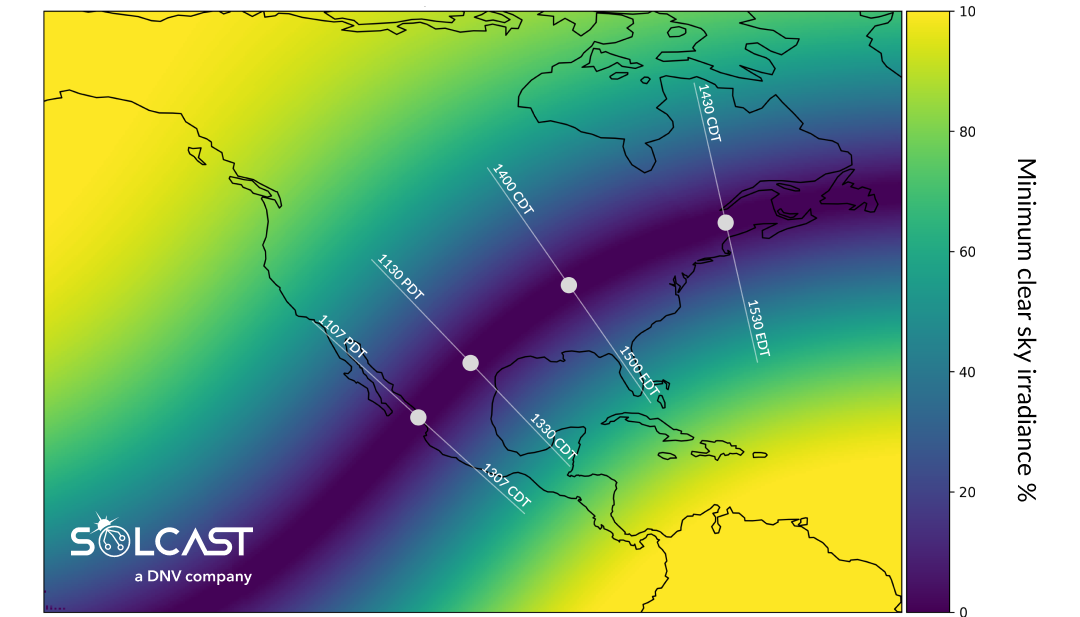Sydney, Australia xxx March 2024 : Analysis from Solcast, a DNV company, concludes that the upcoming solar eclipse’s impact on solar generation across the United States could be greater than any previous eclipse, costing US grids and consumers in lost generation.
On April 8th, 2024, a total eclipse will traverse from Mexico, across Texas, and up the East Coast, resulting in a significant reduction in solar generation for most of the continental US. The eclipse will occur from noon to the early afternoon, coinciding with peak solar generation hours. This analysis is derived using Solcast’s clear-sky irradiance modeling, assuming no presence of clouds or smoke. Due to ongoing growth in national solar capacity, the grid impact of such major solar events is increasing, and this eclipse will have greater impact on power generation than previous eclipses.
Areas where the moon completely blocks the sun will experience a 100% loss in solar generation for up to 6 minutes. However, the overall effects of the eclipse will cost up to 16% of daily total clear sky irradiance in areas most affected.
The over 4.2 million households in the US reportedly having solar panels as of March 2024 will witness a spike in their electricity consumption for the day. As this happens, grid operators will face a sharp decline in solar supply and a surge in demand as these 4.2 million households draw power from the grid. The rate at which solar generation starts and stops, known as “ramping,” plays a crucial role in grid stability. Grid operators are expected to rely on natural gas to ensure stability and meet the household demand spike across national grids, as was done during the previous eclipse in 2023 in California and Texas.
All major grid operators will already be preparing for the maximum potential impact, a temporary total loss of solar generation and fast ramp of solar decreasing then increasing. For areas directly in the path of the eclipse, the maximum duration will be over 90 minutes of impacted generation, and a total loss of up to 6 minutes. In every grid analysed, the “ramp” rate at which solar generation drops off and then picks back up again, is faster than grids normally see in the morning and evening.
Across all grids, calculated maximum losses are up to 39.9GWh, of which 16.2GWh will be lost from household rooftop solar. Dr Hugh Cutcher, lead Data Scientist at Solcast, a DNV Company, stated “Whilst it’s too early to predict cloud impacts, the effects of this eclipse will be significant on solar generation across the country”.

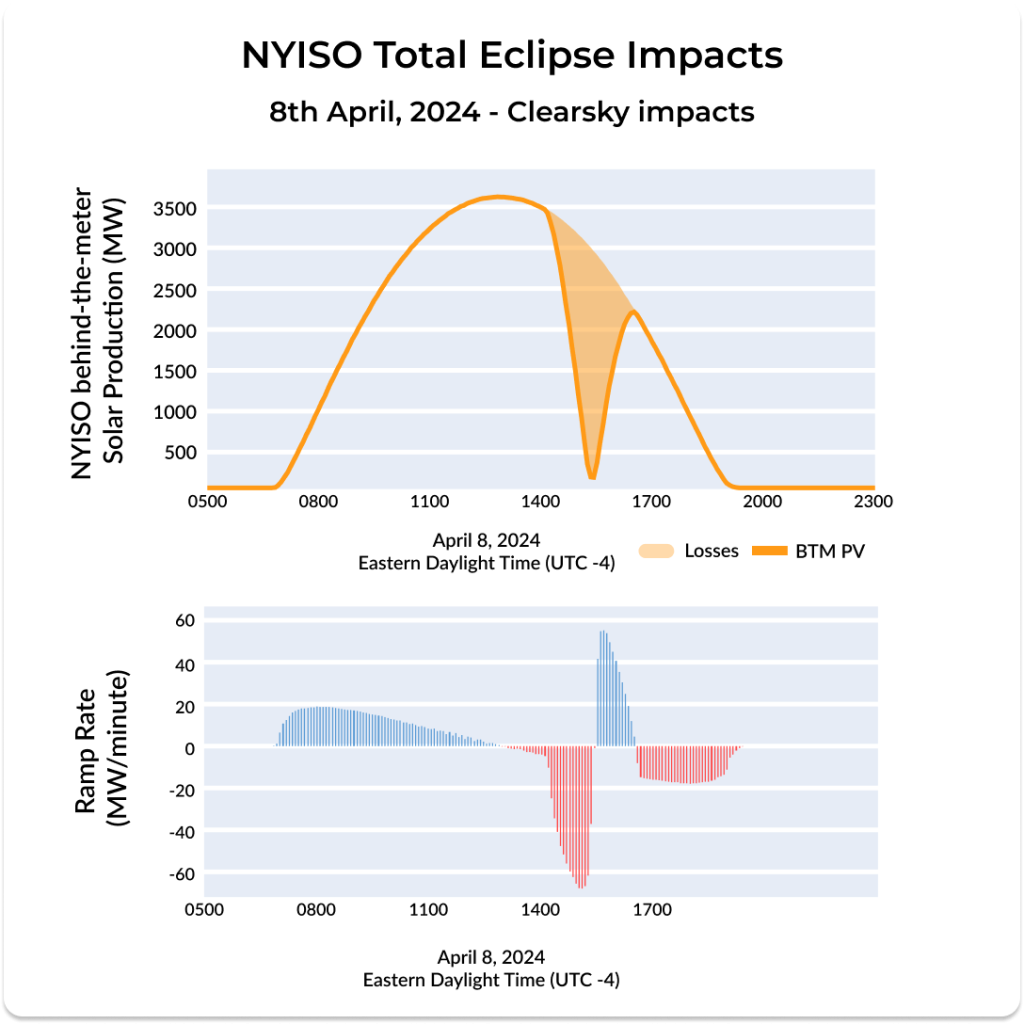
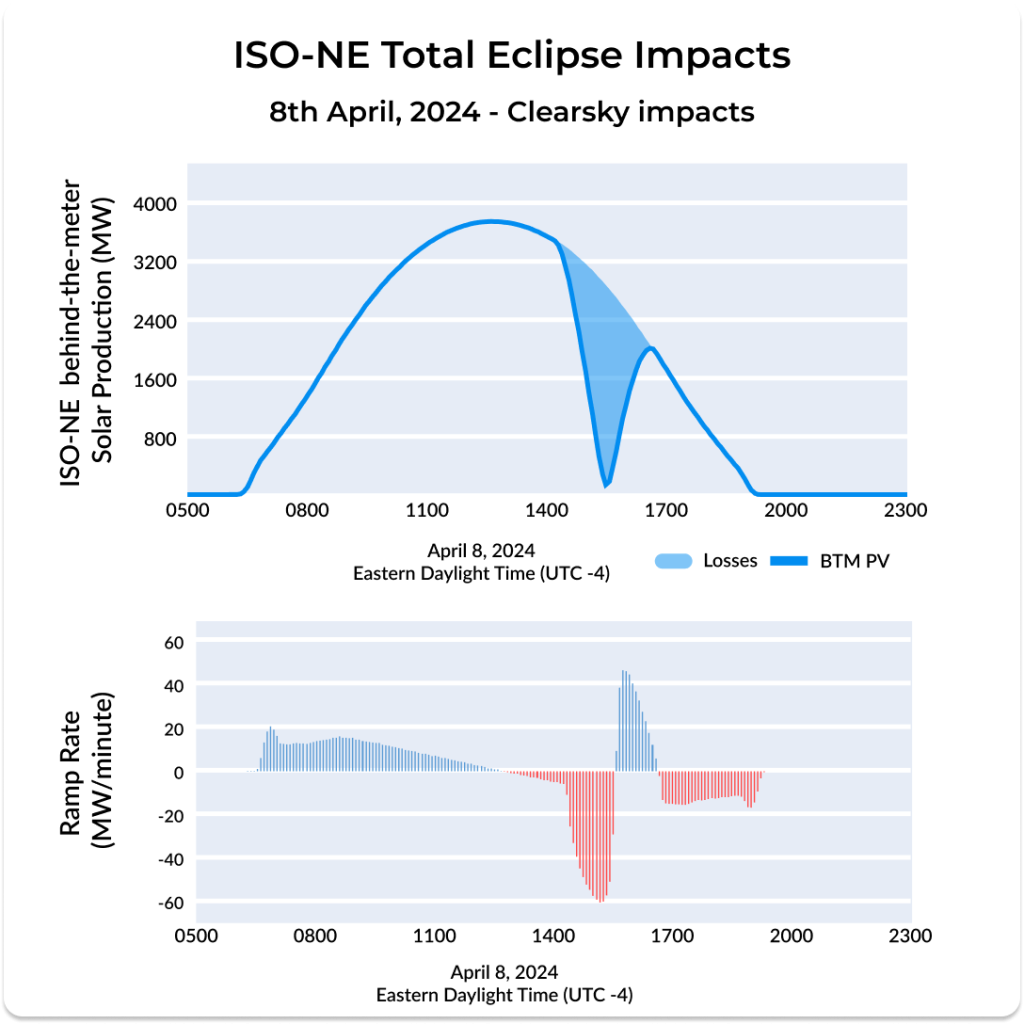
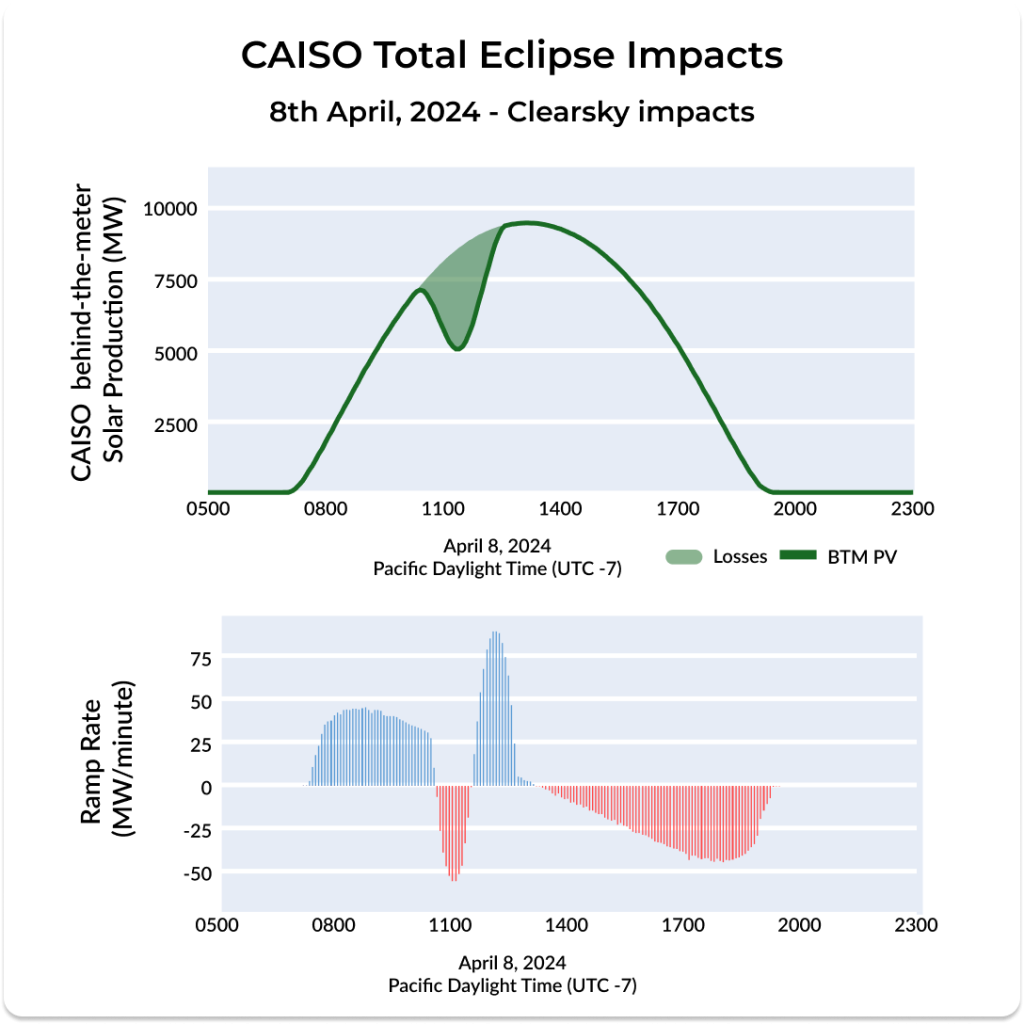
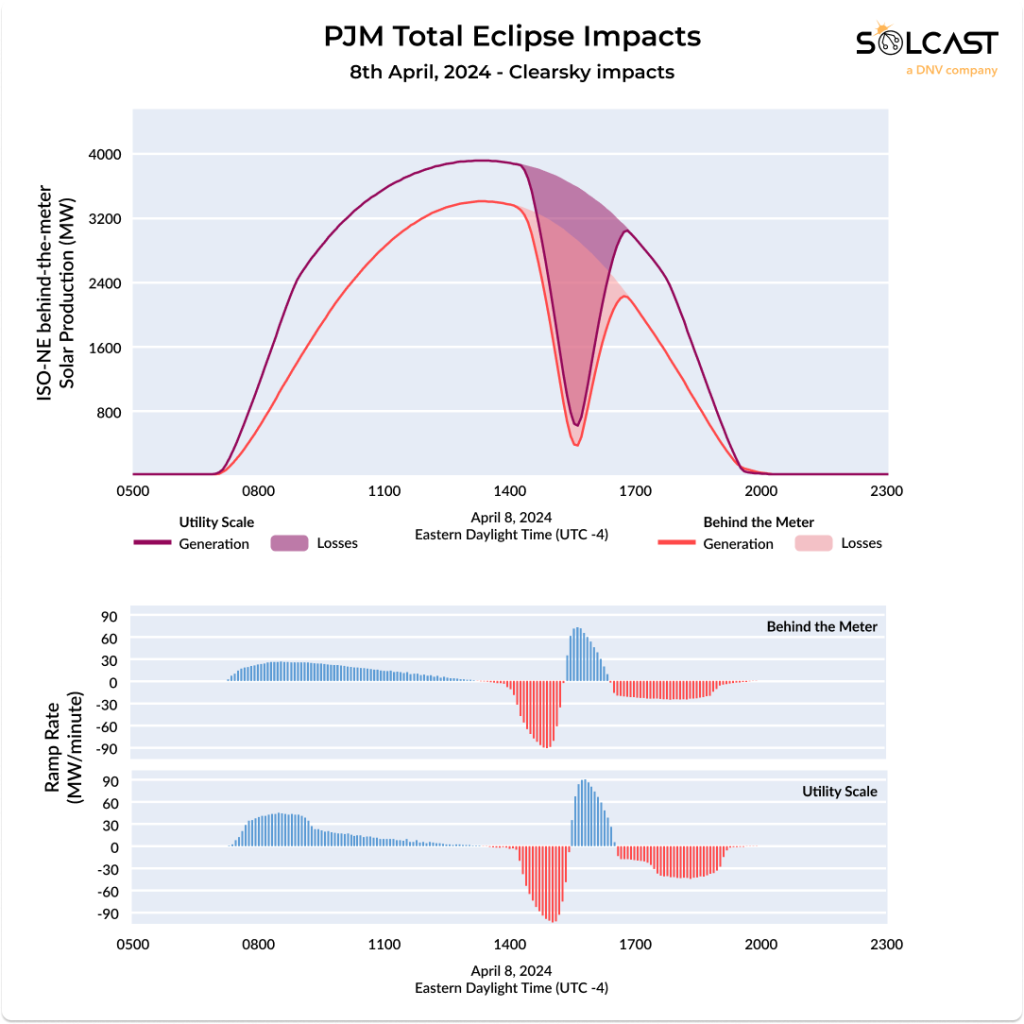
Note: Data is only available for large ISO grids, and is based on modelled estimated capacity, using publicly available generation data.
For media enquiries, please contact:
Harry Woods
Head of Marketing
Solcast, a DNV company
harry.woods@solcast.com
About Solcast
Solcast is a leading provider of solar irradiance data and forecasting technology, delivering data to over 350 customers that manage more than 300GW of assets globally. Solcast produces this data by tracking clouds and aerosols at 1-2km resolution globally, using satellite imagery, global weather data and proprietary AI/ML algorithms to produce over 600 million forecasts every hour. Since 2016 the Solcast API has been bringing accurate data to the market and helping enable the energy industry to deliver the resilient power grids it will take to build a solar-powered future. Solcast became a DNV company in early 2023.

